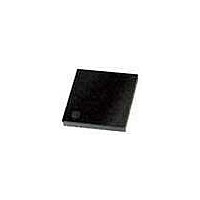PIC18F43K20-E/MV Microchip Technology, PIC18F43K20-E/MV Datasheet - Page 32

PIC18F43K20-E/MV
Manufacturer Part Number
PIC18F43K20-E/MV
Description
8KB, Flash, 768bytes-RAM, 36I/O, 8-bit Family,nanowatt XLP 40 UQFN 5x5x0.5mm TUB
Manufacturer
Microchip Technology
Series
PIC® XLP™ 18Fr
Datasheet
1.PIC18F25K20T-ISS.pdf
(456 pages)
Specifications of PIC18F43K20-E/MV
Processor Series
PIC18
Core
PIC18F
Data Bus Width
8 bit
Program Memory Type
Flash
Program Memory Size
8 KB
Data Ram Size
512 B
Interface Type
I2C, SPI, SCI, USB, MSSP, RJ11
Maximum Clock Frequency
64 MHz
Number Of Programmable I/os
35
Number Of Timers
4
Operating Supply Voltage
1.8 V to 3.6 V
Maximum Operating Temperature
+ 125 C
Mounting Style
SMD/SMT
Package / Case
UQFN-40
Development Tools By Supplier
MPLAB Integrated Development Environment
Minimum Operating Temperature
- 40 C
Operating Temperature Range
- 40 C to + 125 C
Supply Current (max)
30 uA
Core Processor
PIC
Core Size
8-Bit
Speed
48MHz
Connectivity
I²C, SPI, UART/USART
Peripherals
Brown-out Detect/Reset, HLVD, POR, PWM, WDT
Number Of I /o
35
Eeprom Size
256 x 8
Ram Size
512 x 8
Voltage - Supply (vcc/vdd)
1.8 V ~ 3.6 V
Data Converters
A/D 14x10b
Oscillator Type
Internal
Operating Temperature
-40°C ~ 125°C
Lead Free Status / Rohs Status
Details
- Current page: 32 of 456
- Download datasheet (4Mb)
PIC18F2XK20/4XK20
2.4.4
The external Resistor-Capacitor (RC) modes support
the use of an external RC circuit. This allows the
designer maximum flexibility in frequency choice while
keeping costs to a minimum when clock accuracy is not
required. There are two modes: RC and RCIO.
2.4.4.1
In RC mode, the RC circuit connects to OSC1. OSC2/
CLKOUT outputs the RC oscillator frequency divided
by 4. This signal may be used to provide a clock for
external circuitry, synchronization, calibration, test or
other application requirements. Figure 2-5 shows the
external RC mode connections.
FIGURE 2-5:
2.4.4.2
In RCIO mode, the RC circuit is connected to OSC1.
OSC2 becomes an additional general purpose I/O pin.
The RC oscillator frequency is a function of the supply
voltage, the resistor (R
and the operating temperature. Other factors affecting
the oscillator frequency are:
• input threshold voltage variation
• component tolerances
• packaging variations in capacitance
The user also needs to take into account variation due
to tolerance of external RC components used.
DS41303G-page 32
R
C
Note 1:
V
Recommended values: 10 k R
EXT
EXT
SS
V
F
I/O
DD
OSC
(2)
2:
/4 or
EXTERNAL RC MODES
Alternate pin functions are listed in
Section 1.0 “Device Overview”.
Output depends upon RC or RCIO clock mode.
RC Mode
RCIO Mode
OSC1/CLKIN
OSC2/CLKOUT
EXT
EXTERNAL RC MODES
C
EXT
) and capacitor (C
> 20 pF
PIC
EXT
®
(1)
MCU
100 k
EXT
Internal
Clock
) values
2.5
The Oscillator module has two independent, internal
oscillators that can be configured or selected as the
system clock source.
1.
2.
The system clock speed can be selected via software
using the Internal Oscillator Frequency Select bits
IRCF<2:0> of the OSCCON register.
The system clock can be selected between external or
internal clock sources via the System Clock Selection
(SCS<1:0>) bits of the OSCCON register. See
Section 2.9 “Clock Switching” for more information.
2.5.1
The INTOSC and INTOSCIO modes configure the
internal oscillators as the primary clock source. The
FOSC<3:0> bits in the CONFIG1H Configuration
register determine which mode is selected. See
Section 23.0 “Special Features of the CPU” for more
information.
In INTOSC mode, OSC1/CLKIN is available for general
purpose I/O. OSC2/CLKOUT outputs the selected
internal oscillator frequency divided by 4. The CLKOUT
signal may be used to provide a clock for external
circuitry, synchronization, calibration, test or other
application requirements.
In INTOSCIO mode, OSC1/CLKIN and OSC2/CLKOUT
are available for general purpose I/O.
2.5.2
The output of the HFINTOSC connects to a postscaler
and multiplexer (see Figure 2-1). One of eight
frequencies can be selected via software using the
IRCF<2:0> bits of the OSCCON register. See
Section 2.5.4 “Frequency Select Bits (IRCF)” for
more information.
The HFINTOSC is enabled when:
• SCS1 = 1 and IRCF<2:0> 000
• SCS1 = 1 and IRCF<2:0> = 000 and INTSRC = 1
• IESO bit of CONFIG1H = 1 enabling Two-Speed
• FCMEM bit of CONFIG1H = 1 enabling Two-
• FOSC<3:0> of CONFIG1H selects the internal
The HF Internal Oscillator (IOFS) bit of the OSCCON
register indicates whether the HFINTOSC is stable or not.
Start-up.
Speed Start-up and Fail-Safe mode.
oscillator as the primary clock
The
Oscillator) is factory calibrated and operates at
16 MHz. The frequency of the HFINTOSC can
be
OSCTUNE register (Register 2-2).
The
Oscillator) operates at 31 kHz.
Internal Clock Modes
INTOSC AND INTOSCIO MODES
user-adjusted
HFINTOSC
LFINTOSC
HFINTOSC
2010 Microchip Technology Inc.
(High-Frequency
via software using the
(Low-Frequency
Internal
Internal
Related parts for PIC18F43K20-E/MV
Image
Part Number
Description
Manufacturer
Datasheet
Request
R

Part Number:
Description:
Manufacturer:
Microchip Technology Inc.
Datasheet:

Part Number:
Description:
Manufacturer:
Microchip Technology Inc.
Datasheet:

Part Number:
Description:
Manufacturer:
Microchip Technology Inc.
Datasheet:

Part Number:
Description:
Manufacturer:
Microchip Technology Inc.
Datasheet:

Part Number:
Description:
Manufacturer:
Microchip Technology Inc.
Datasheet:

Part Number:
Description:
Manufacturer:
Microchip Technology Inc.
Datasheet:

Part Number:
Description:
Manufacturer:
Microchip Technology Inc.
Datasheet:

Part Number:
Description:
Manufacturer:
Microchip Technology Inc.
Datasheet:










